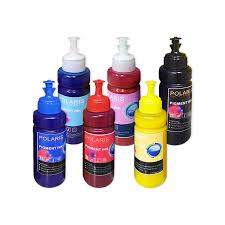Key Aspects of Pigment for ink
2024-07-30
Pigments for ink are crucial components that provide color, opacity, and various functional properties to different types of inks used in printing, writing, and other applications. Here are key aspects to consider when dealing with pigments for ink:
Types of Pigments:
1. Organic Pigments:
- Characteristics: Made from carbon-based molecules, offering bright and vibrant colors.
- Applications: Commonly used in inks for textiles, packaging, and printing on paper.
- Examples: Phthalocyanine blue and green, azo pigments, and quinacridone pigments.
2. Inorganic Pigments:
- Characteristics: Made from mineral compounds, known for their stability and durability.
- Applications: Used in inks requiring high heat and light stability, such as automotive and industrial applications.
- Examples: Titanium dioxide (white), iron oxide (red, yellow, black), and chromium oxide (green).
3. Specialty Pigments:
- Metallic Pigments: Provide a metallic sheen, used in specialty printing for packaging and decorative purposes.
- Pearlescent Pigments: Create a pearlescent or iridescent effect, often used in cosmetics and high-end packaging.
- Fluorescent Pigments: Offer bright, glowing colors under UV light, used in security printing and high-visibility products.
Key Considerations:
1. Color Strength:
- High color strength pigments are preferred as they require less pigment to achieve the desired color intensity, making them cost-effective and efficient.
2. Dispersibility:
- Good dispersibility ensures that pigments are evenly distributed throughout the ink, preventing clumping and ensuring consistent color.
3. Lightfastness:
- Pigments with high lightfastness resist fading when exposed to light, important for inks used in outdoor or high-exposure applications.
4. Heat Stability:
- Heat-stable pigments are necessary for inks used in processes involving high temperatures, such as thermal printing.
5. Chemical Resistance:
- Inks for industrial and packaging applications often require pigments that can withstand exposure to chemicals and solvents.
6. Opacity:
- High-opacity pigments provide good coverage and are essential for inks used on dark or colored substrates.
Applications:
1. Printing Inks:
- Offset Printing: Requires high-quality pigments with good dispersibility and stability.
- Flexographic Printing: Often used for packaging, requiring pigments with good adhesion and resistance to abrasion.
- Gravure Printing: Needs finely milled pigments for high-quality, detailed prints.
- Screen Printing: Used for textiles and large surfaces, requiring pigments with good opacity and vibrant colors.
2. Inkjet Inks:
- Water-Based Inks: Require pigments that are easily dispersible in water and have good lightfastness.
- Solvent-Based Inks: Need pigments that can withstand the aggressive solvents used in the formulation.
- UV-Curable Inks: Use pigments that are stable under UV light and provide good opacity and color strength.
3. Toner for Laser Printers:
- Pigments used in toners need to have good heat stability and charge properties to function correctly in the electrostatic process.
4. Pen and Marker Inks:
- Require pigments that provide vibrant colors, are non-toxic, and have good flow properties.
Processing Techniques:
1. Pigment Milling:
- Pigments must be finely milled to ensure even dispersion in the ink and to prevent clogging in printing equipment.
2. Surface Treatment:
- Surface treatments can improve the compatibility of pigments with different ink vehicles, enhancing dispersibility and stability.
3. Masterbatch:
- Pigments can be incorporated into a masterbatch, a concentrated mixture that is later diluted in the final ink formulation.
Popular Pigment Suppliers:
1. Clariant:
- Offers a wide range of high-performance pigments for various ink applications.
2. BASF:
- Provides pigments known for their excellent lightfastness and color strength.
3. DIC Corporation:
- Specializes in pigments for printing inks, with a focus on stability and dispersibility.
4. Sun Chemical:
- A major supplier of pigments, offering products tailored for specific printing technologies.
Selecting the right pigments for ink involves considering the specific requirements of the application, such as color quality, stability, and compatibility with the ink formulation. This ensures high-performance and visually appealing results in the final printed product.



